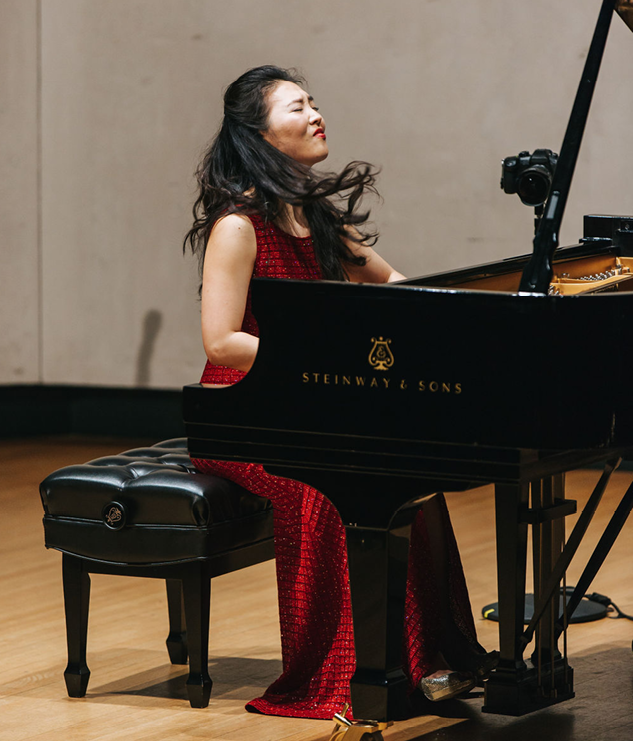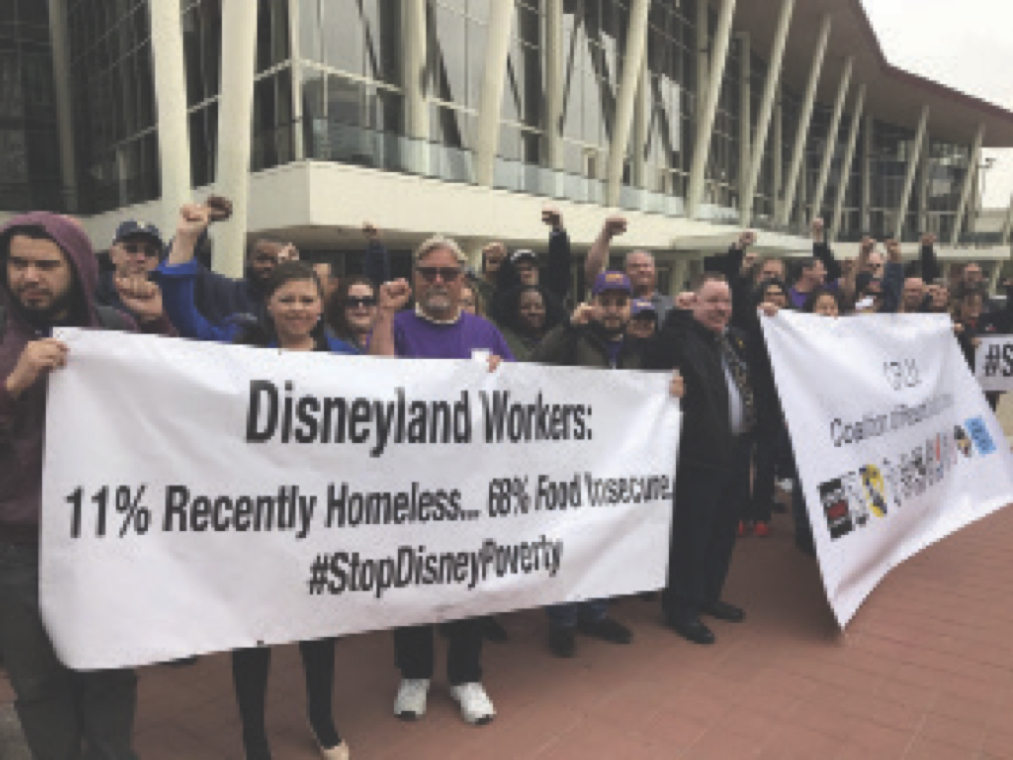Jeeyoon Kim’s performances are unique among concert pianists. She walks onto the stage and up to a microphone. In a short, poetic introduction she invites the audience to go on a journey with her. There are no programs to leaf through during the concert; these are handed out at the end. Instead, Kim delivers the prelude, interpreting the composer’s intentions, often providing historical context. She breaks with tradition as much as possible. To maintain a flow, concerts are no longer than an hour, with no intermission, and no “disappearing backstage” she says.

Before Kim embarked on a career as a soloist, she was on track to secure a university teaching position. After a rigorous classical music program at Indiana University, where she earned a Doctorate of Musical Arts in performance, she went back to school to earn a master’s degree in piano pedagogy. It was a strategy, she says, to obtain a teaching position—“a real job”—to support her love of piano.
After her final recital, as Dr. Kim, in 2009, there was fulfillment but uncertainty at the same time. She had studied piano pedagogy to be a great teacher. By 2015, she says, “I wanted to perform, to share the joy of classical music. And I love teaching but being at a university was not a perfect fit.” So, she parlayed her prodigious talent and love of teaching into a unique career. It was after her sold-out and highly acclaimed concert at Carnegie Hall in 2017 that Kim of Local 7 (Orange County, CA) was convinced that her idea would work.
“I realized I had to create a bridge to the classical world. Playing beautiful music, but in a way that connects the audience to the composer’s life. What was Brahms thinking about? His ‘“Intermezzo”’ has so many layers of feelings. Schubert is a musician’s musician—a composer I’d love to sit down and talk to.”
Over the years, as she’s experimented, her narratives took on a personal and meditative feel. For instance, before Debussy’s “Pagodas,” Kim invokes her own childhood home. “Retrieving fresh water from the mountain spring—visions of Buddhist temples, pine trees veiled in the misty morning, and the ringing of the gong each hour.”
“Piano is a natural extension of my body. There is a strong connection to the composer. It’s a byproduct and the audience has no choice but to connect.” Throughout her life in education, it’s been a recurring theme.
She asks: “How can I make piano performance the highest form of artistic expression? How can I communicate with the audience?” She believes classical music should be contemporary, accessible, and approachable. With her podcast, “Journey Through Classical Piano,” Kim aims to reach a wider audience. For special projects and videos, she collaborates with filmmakers, poets, and visual artists. “Most people love it,” she says, and have become “groupies.”
Following a move to California, she joined Local 7. It was there that she began to reconnect, as if with old friends. She started networking and talking with the union and soon realized it was the support system she had been looking for. “I didn’t know there was a whole army of people behind me. When I connected with the union, there were people who supported my journey.” Through the efforts of Local 7 and the Musicians Performance Trust Fund (MPTF), toward the end of the pandemic, Kim performed at the Irvine Barclay Theatre, with 400 people in attendance.
Now a teacher with a private studio, Kim has the best of both worlds. Her students include serious college pianists pursuing classical performance—a few teenagers, but primarily adults, anywhere from 25 to 85 years old. For some, it was a passion growing up and they’re returning to piano as an outlet. She enjoys teaching older students. “It’s an oasis for them,” she says. “These sessions are like piano therapy. We talk about life and struggles. How to play staccato better ended up as an important factor in being a human and their performance of life.”
Kim draws on the lessons of her teacher in South Korea who approached music through the natural world. “Music is transparent. If you’re not connected to the piece, it’s impossible to be transparent. My teacher said, ‘Convince me as nature does—with music.’”
She says, “Water comes down the stream; it’s not perfect, but it’s in that imperfection that there’s an organic shape. It’s just who you are.” Kim laughs when she says that in South Korea, “There’s a Buddhist temple on every mountain so it’s natural to view the world through a spiritual lens.”
The two-time winner of the international Global Music Award has been playing since she was four years old. She has performed throughout the world, namely with the San Diego Symphony, the Mozart Festival in Salzburg, and recently with the chamber music organization Art of Elan (collaborating with Kate Hatmaker and Fiona Digney of Local 325 [San Diego, CA]).
In her book, Whenever You’re Ready: How to Compose the Life of Your Dreams, Kim shares the tools she uses to achieve mental and physical balance, artistic expression—and a winner’s mindset. She focuses on different themes, like forming effective habits, boosting creativity, guarding your mind, and keeping negativity at bay. Kim’s biggest lesson is learning from failure. She remembers another teaching saying, “Don’t ask why, ask what now?”
For Kim, letting go is a lifelong lesson. “Always ask yourself if you are hanging on to something you cannot control, which is not productive. Once you shift to something you can control, the positive flow will come back to you.”
Kim is generous with her insight, recalling her own disappointments and the changes she’s made to create more balance in her life. “I can only control my preparation and mindset,” she says, adding that “Every direction has been a lesson—to be a better person, pianist, and teacher. I take a holistic view of classical music—as a presenter and an agent—whether it’s becoming a better musician or being more positive. Life is not always easy, but with music, it’s better.”




